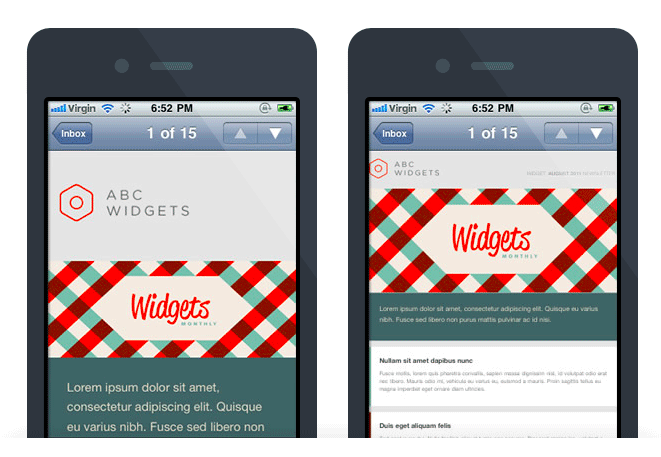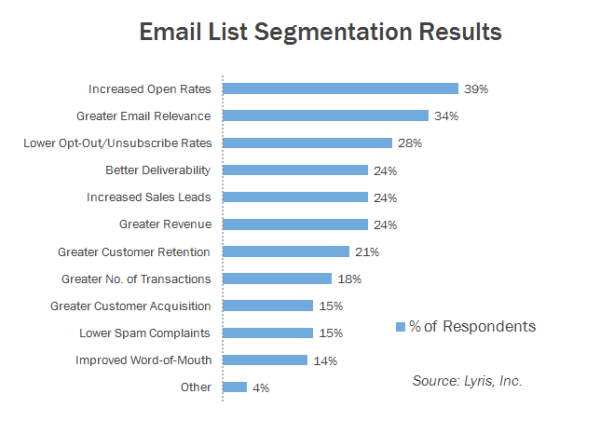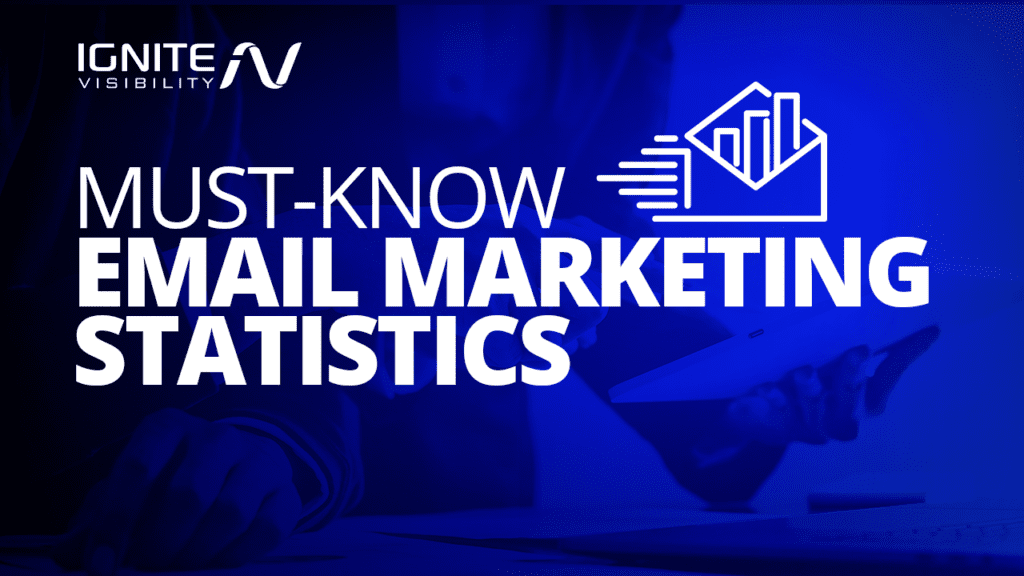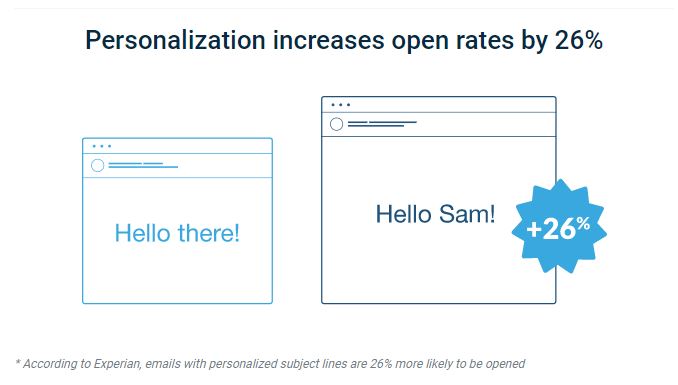For an industry that prides itself on risk-taking and creativity, marketing relies pretty heavily on numbers.
And those numbers reveal that email marketing is the most effective marketing channel out there, outpacing SEO, affiliate marketing, and even social media.
In this article, I’ll cover 20 must-know email marketing statistics to boost your email campaigns!
What We’ll Cover:
- Subject Lines and Open Rates
- Email Marketing on Mobile
- Email Segmentation and Personalization
- Email Engagement
The driving force behind lead generation and customer retention, email is the tried and true backbone of digital marketing, which means it needs to play a major part in your business strategy.
In this post, we’ve compiled a list of incredible email marketing stats that will illustrate why you simply can’t afford to overlook this opportunity.
Subject Lines and Open Rates
Subject lines are the most important sentence of your entire email as they are the first impression you make on recipients. While the email itself can be brimming with high-quality content, in a cluttered inbox, you need some eye-catching subject lines to stand out. At the end of the day, your subject line has to be concise and compelling enough to encourage users to click through and read your email. Here’s what the data shows:
- 47% of email recipients will decide if they want to open your email based solely on the subject line.
(Source: OptinMonster)
The best subject lines are short, sweet, and communicate the promise of value. In other words, your subject line should contain information or that will reaffirm how your product or service will improve their lives and/or their businesses.
- Emails related to hobbies, recreation, and government have the highest open rates.
(Source: MailChimp)
The main takeaway here is that when a hobby or fun activity is weaved into the subject line, the impulse to click through is high.
- Emails that include personalized subject lines receive a 26% boost in open rates.
(Source: Campaign Monitor)
Personalized experiences delivered in a relevant, authentic way resonate with customers, making them feel valued and appreciated.
- The words “free”, “help”, “percent off”, and “reminder” in a subject line have been found to negatively impact open rates.
(Source: Aritic)
Many of these words can trigger a spam filter. Using them in your subject lines can land your email in your customers’ junk mail folders instead of their inboxes.
- 82% of marketers send emails with no more than 60 characters in the subject line.
(Source: Convince & Convert)
Your readers don’t prefer to see their inboxes filled with wordy subject lines and email messages. It’s best to aim for 44 characters or so.
Email Marketing on Mobile

Email campaign: use a mobile responsive template
As technology continues to move further and further away from desktop, mobile email marketing is becoming more critical. The proliferation of iPhone, Android, and portable tablet devices means that businesses need to start adopting a “mobile-first” mentality or risk losing all of the clicks, opens, and conversions that will help deliver revenue back to their business. Take these data points, for example:
- Mobile devices account for roughly half of all read emails.
(Source: eMailmonday)
This means that the content email marketing teams create should be specifically tailored to the requirements and habits of smartphone users.
- 23% of consumers who open an email on a mobile device will open that same email again later.
(Source: Campaign Monitor)
This data point shows that email consumption habits can’t be ignored when creating a successful email marketing strategy. You not only want to grab the recipient’s attention, but hold it long enough to get them to come back and engage with your content.
- 69% of web customers are compelled to make purchasing decisions after viewing marketing emails from their smartphone.
(Source: Disruptive Advertising)
With the convenience of smartphones being one of the main factors influencing customers’ expectations, it’s important for you take the opportunity to make the customer experience as seamless as possible.
- More than 40% of subscribers will delete an email if it’s not optimized for mobile.
(Source: SaleCycle)
These days, most people believe that if a website isn’t mobile-friendly and responsive, it means that the business simply doesn’t care about them or their experience with their brand.
- One out of every three clicks in an email is registered on a mobile device.
(Source: Campaign Monitor)
Since initial opens are increasingly taking place on mobile devices, it’s more common for a click to occur on a mobile device than it is on a desktop or laptop computer.
Email Segmentation and Personalization
Segmenting your customers and audiences allows you to create powerful, personalized emails that deliver highly tailored content to the right people at the right time. While there was a time when personalization and segmentation were optional, now, marketers need to meet their customers’ expectations. To do so, they need to create relevant, personalized messages that subscribers can’t ignore.

Segmenting your lists can have a major effect on email deliverability rates
- Email personalization yields a 600% higher revenue and transaction rate per email than non-personalized emails.
(Source: Experian)
Whether it’s the recipient’s first name, civil status, or age, you can include these bits of information in the body of your email to take your personalization efforts a step higher.
- Personalized calls to action convert twice as well as default calls to action.
(Source: HubSpot)
By serving your subscribers content that accurately reflects their current level of interest and knowledge on the subject, your personalized calls to action will outperform generic ones any day.
- Birthday emails generate 342% higher revenue per email than standard promotional emails.
(Source: Experian)
Since birthdays are synonymous with gift-giving, it’s best to offer your subscribers a special deal, offer, or free gift. These coupons can be used online or in-store, and should be easy to redeem.
- Segmented email campaigns achieve nearly 15% higher open rates than non-segmented email campaigns.
(Source: MailChimp)
Email list segmentation is definitely the route to take if you want to boost user engagement with your email campaigns. After all, people only want to receive emails that are of value to them and are personalized to meet their needs.
- Segmented campaigns surpass unsegmented campaigns in every metric, including open rates, unique open rates, click-through rates, and bounce rates.
(Source: MailChimp)
Segmenting your email marketing lists has an overwhelmingly positive impact on the engagement of your customers. Targeting subscribers via an identifying merge value—like interest, industry, position type, location, etc.—is an easy way to keep abuse and unsubscribe rates low.
Email Engagement
From open rates and click-through rates to the number and frequency of spam complaints, email engagement is important for a variety of reasons—one of them involving increased return on investment and traffic to your website. But, ultimately, email engagement is the primary factor in determining inbox placement. To help you generate higher levels of positive email engagement, check out these data-backed email marketing statistics.
- The top three reasons people choose to unsubscribe from an email list—too many emails (59%), information is no longer relevant (43%), or do not remember signing up (43%).
(Source: OptinMonster)
If you’re seeing a higher rate of unsubscribes, the first thing you need to do is reassess your email marketing efforts to make sure you’re doing everything you can to deliver useful, exciting, valuable content to your subscribers.
- The best day of the week to send out a marketing email is Tuesday. Thursday is the second-best day to send an email.
(Source: CoSchedule)
Every email list is made up of a different set of people with a different set of habits. While your best send time may or may not be the same as another email marketer’s best send time, emails sent on a weekday tend to perform better than emails sent on a Saturday or Sunday.
- The best time of day to send an email is around 10 am.
(Source: CoSchedule)
To maximize the impact of your marketing message, you want to be mindful of when you send your emails. Open rates could drop if your email goes out at the wrong time, so be sure to schedule it so it falls on key transitions throughout the day—late morning, after lunch, end of the workday, etc.
- Email subscribers are almost four times more likely to share your content on social media.
(Source: QuickSprout)
Since your subscribers are more likely to click-through to read your blogs, it’s no surprise that they’re more inclined to share them with their social networks as well.
- 54% of marketers say that increasing email engagement rate is a top priority.
(Source: Ascend2)
One of the best things about email marketing is that you can continually learn from your past campaigns and adjust your next one, allowing you to consistently refine your process until you see your peak results.
Time to Click Send and Drive Sales
If this data has revealed anything, it’s that marketing trends may come and go, but email marketing isn’t going anywhere anytime soon.
Remember—while there are multiple channels you can use to reach your customer base, email is the one in which you can customize to your target audience the most.
And now that you’ve got these remarkable email marketing statistics in your arsenal, are you ready to crush your goals for the rest of 2020? Check out the video below to learn even more!

